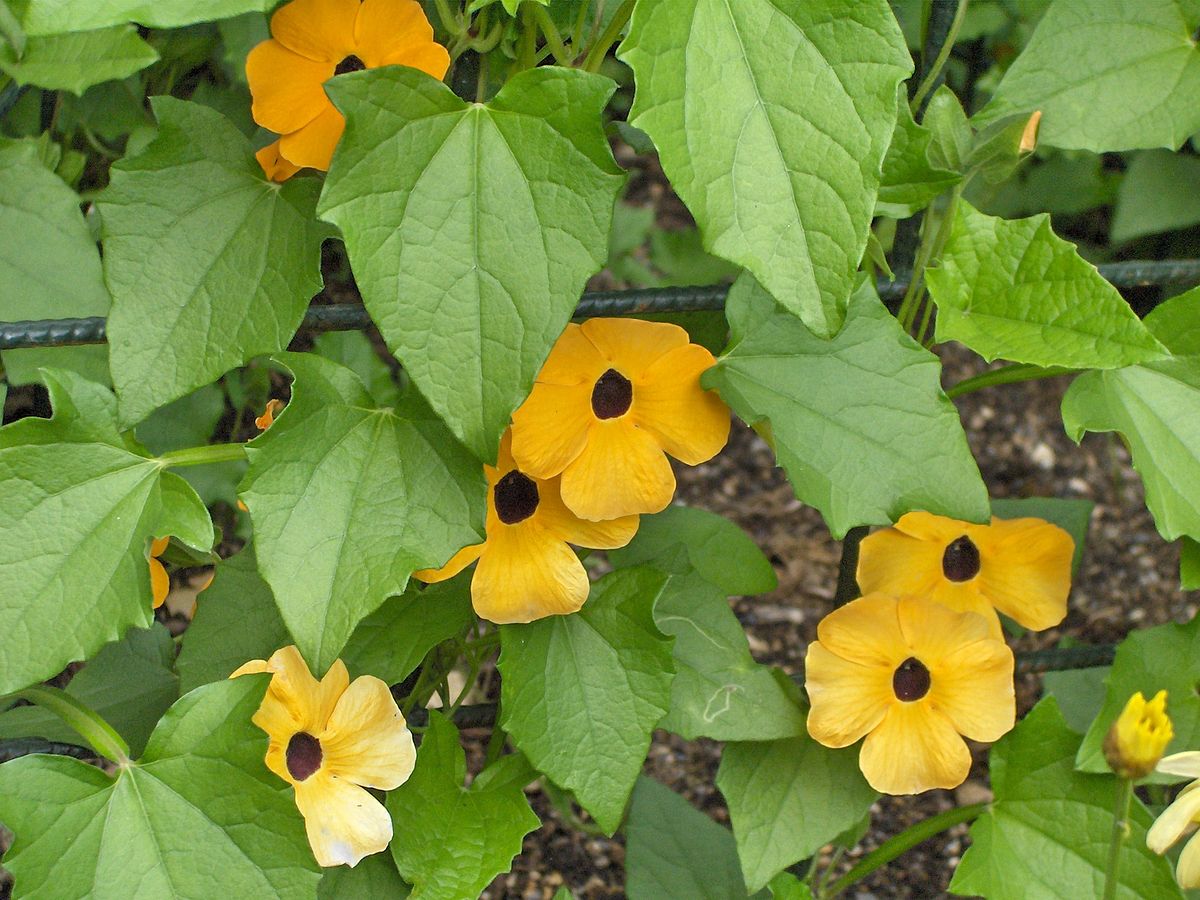Clockvines
(Thunbergia)

Description
Thunbergia, commonly known as Black-eyed Susan Vine, is a genus of flowering plants in the Acanthaceae family. The genus consists of around 200 species of annuals, perennials, and climbers native to tropical and subtropical regions of Asia and Africa. Thunbergia plants are known for their showy flowers, which range in color from yellow, orange, and red to blue and purple. The genus is named after the Swedish botanist Carl Peter Thunberg (1743-1828), who was a student of Linnaeus and contributed greatly to the study of botany in South Africa and Japan. Thunbergia plants have been widely cultivated and hybridized for ornamental purposes due to their attractive flowers and ability to thrive in warm, humid conditions. Botanical Description Thunbergia plants are typically climbers or trailing vines with twining stems that can reach up to 6 meters in length. The leaves are simple, ovate to heart-shaped, and arranged alternately along the stem. The flowers are funnel-shaped and have five petals that are fused at the base, forming a distinct black or dark-colored eye in the center. Thunbergia flowers are borne in clusters at the ends of the stems and can be up to 7 cm in diameter. The flowers are usually brightly colored, and some species have patterns or markings on the petals. The fruit of Thunbergia plants is a capsule containing numerous seeds. Classification and Distribution Thunbergia plants belong to the family Acanthaceae, which includes around 250 genera and over 2,500 species of herbaceous and woody plants. The Acanthaceae family is widely distributed in tropical and subtropical regions of the world, with the highest diversity in Africa and Asia. The genus Thunbergia is divided into several sections based on the characteristics of the flowers and leaves. The sections include Acanthophippium, Meyenia, Tetraraphidia, and Thunbergia. Some of the most commonly cultivated species of Thunbergia include Thunbergia alata, Thunbergia grandiflora, and Thunbergia mysorensis. Cultivation and Uses Thunbergia plants are widely cultivated as ornamental plants in gardens, parks, and indoor spaces. They are valued for their showy flowers, attractive foliage, and ease of cultivation. Thunbergia plants are tolerant of a wide range of soil types, as long as they are well-drained, and require moderate amounts of water and fertilizer. Thunbergia plants can be propagated from seeds or cuttings. Seeds should be sown in a well-drained potting mix and kept moist until germination. Cuttings should be taken from the tips of the stems and rooted in a moist potting mix. Thunbergia plants can be grown as climbers, trained on trellises or arbors, or as trailing vines in hanging baskets. They are often grown as annuals in colder climates, but some species can be grown as perennials in warmer regions. Thunbergia plants are also used in traditional medicine in some parts of the world. The leaves and stems of Thunbergia laurifolia are used in Thai traditional medicine to treat fever, cough, and inflammation. The plant contains several bioactive compounds, including alkaloids, flavonoids, and phenolic acids, that have been shown to have anti-inflammatory, antioxidant, and antiviral properties. In Conclusion Thunbergia plants are a diverse and attractive group of flowering plants that are widely cultivated for ornamental purposes. They are valued for their showy flowers, ease of cultivation, and adaptability to a wide range of climates
Taxonomic tree:







